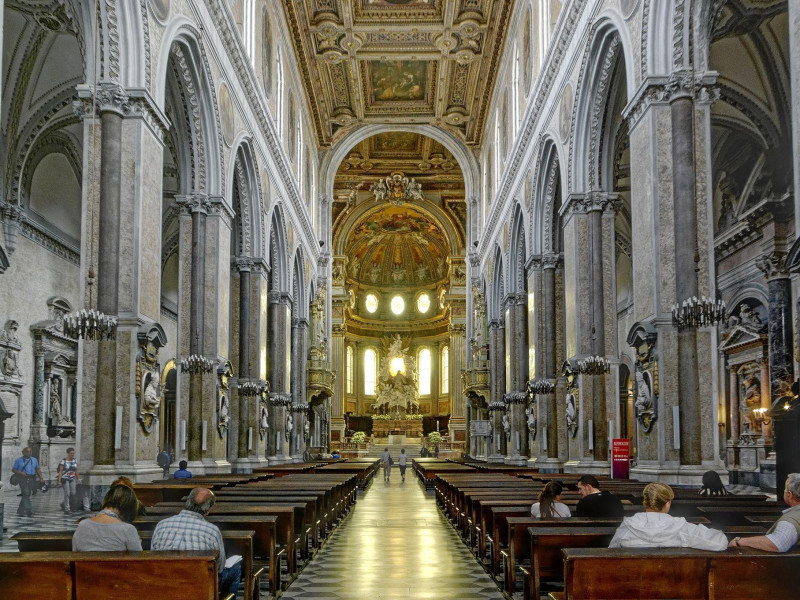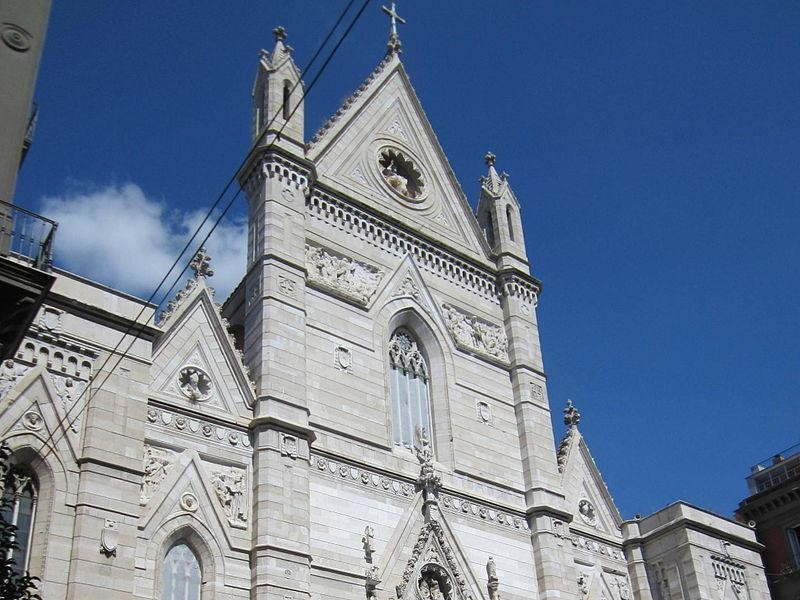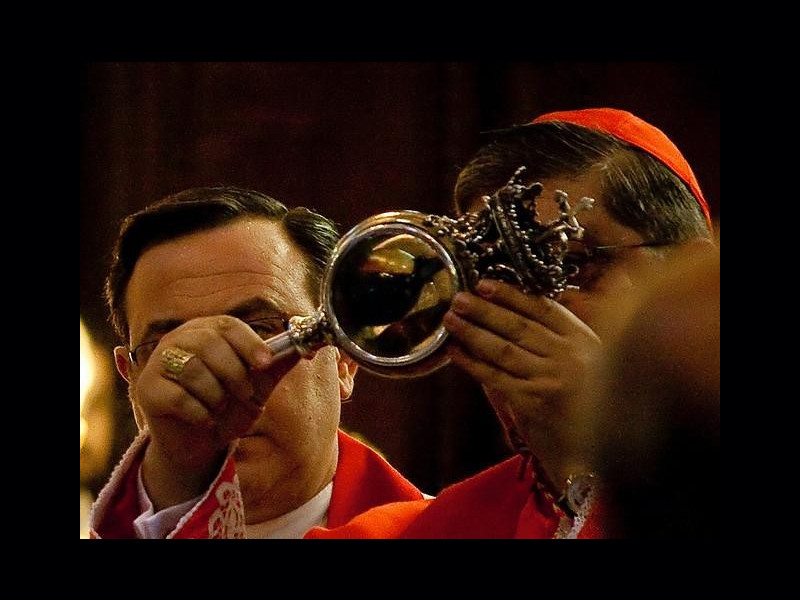Cattedrale di Santa Maria Assunta (Duomo di Napoli)
The Cathedral of Naples (or Duomo), dedicated to St. Mary Assumed, is located in a square surrounded by arcades and is famous for hosting the oldest baptistery of the West and the ritual of the "dissolution of the blood" of St. Gennaro. Its construction began in the thirteenth century, incorporating the previous Early Christian structures, for the will of King Charles II of Naples by French and local workers. The facade was rebuilt in the Gothic style after the earthquake of 1349, the current one is the work of Enrico Alvino; between the '400 and' 500, through private donations, were added the Crypt, the Chapel of Succorpo and, after the plague of 1526, the Royal Chapel of the Treasure of St. Gennaro, as votive. During the eighteenth century, after several renovations due to earthquakes, were built the baroque chapels, enriched with marble decorations and stucco, the apse, the Gothic nave and the transepts. During restoration after World War II, were emerged the archaeological remains now usable. At the three naves are the three Gothic portals with three cusps, there are five windows in the facade. The nave is covered by a coffered ceiling; the walls exhibit paintings by Luca Giordano and newsagents with the busts of the bishops of the city. All the chapels are decorated with sculptures and paintings by artists such as Vasari and Giordano. The Chapel Capece Minutolo is an example of High Gothic, with sculptures by Domenico Antonio Vaccaro; Chapel Brancaccio houses sculptures by Pietro Bernini, Girolamo D'Auria, Michelangelo Naccherino and Tommaso Montani. The Royal Chapel of the Treasure of St. Gennaro is a stand alone building, as well as the Basilica of St. Restituta, and is a great example of Neapolitan Baroque. The Sacristy, with a vaulted nave, houses the painting "St.Gennaro Pleases the Trinity", by Santolo Cirillo. The apse, by a double flight of stairs, leads to the Chapel of Succorpo, an example of Renaissance architecture attributed to Bramante. Noteworthy is the first organ, by Giovanni Francesco Di Palma, 1549.



